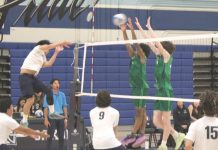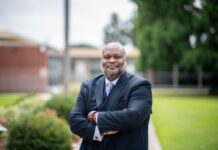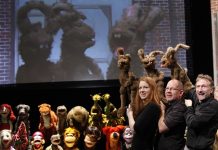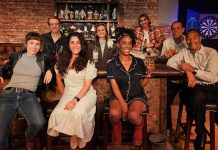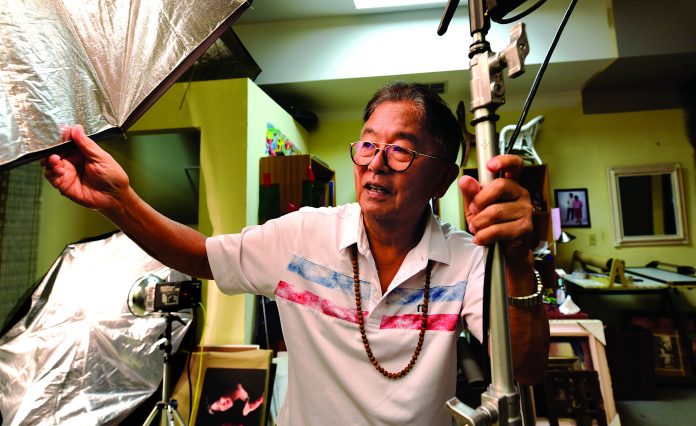
Gary Miyatake’s resume includes portraits of those in political office
By Gary Kohatsu
Photographing elected officials is both a privilege and an art form. Some photographers, such as Pete Souza — former President Barack Obama’s White House photographer — have gained a certain amount of fame for the job.
Souza has printed a book, “Obama, an Intimate Portrait,” of his experiences of eight years with the president, and has also gone on speaking engagements.
In Gardena, photographer Gary Miyatake of Toyo Photography on Gardena Boulevard, has carved out a bit of acclaim in photographing Los Angeles area and Gardena officials.
He might not have a book in release, but give him time.
Miyatake’s inaugural “political” photo assignment was both a challenge and a historical landmark.
“The first real name politician was Los Angeles Mayor Tom Bradley in his last year (in office) in 1993,” Miyatake said. “They were looking for a formal portrait of (Bradley). I discussed how I could create this portrait. Because of Bradley’s stature (he was 6 foot, 2 inches), I believed he should be photographed full length. Like a portrait in an art book by the famous artist, (John Singer) Sargent.”
That is exactly how Miyatake photographed Bradley. When the former mayor, who served 20 years in office, died in 1998, Miyatake said the portrait he took of him was seen next to Bradley’s funeral casket.
That portrait was taken at Miyatake’s previous studio in San Gabriel Valley.
During the 27 years since the Bradley portrait, Miyatake has photographed numerous city of Gardena officials, and says he is set to capture the image of the city’s newest councilmember, Paulette Francis.
He has also been the unofficial official photographer for many local court judges.
Miyatake who has been shooting professionally more than 50 years, says that photographing political figures is for him, not much different than shooting images of your average Joe.
“The photographer or artist must capture the character of each person in the same way,” Miyatake said. “You do this by knowing the subject’s history, the lighting, body language and finally the expression, as you capture him or her in the camera.”
The cost per portrait session is dependent on the subject’s budget, but regardless of price, Miyatake says the final image will be his best work.
“Every portrait is important,” he said. “I work or do my work based on love and passion for the profession, of which I obviously very much love.”
A portrait session with Miyatake might take an hour, unless the subject wants to meet for discussion before images are taken.
Of all political leaders he could photograph, Miyatake admits to favoring current president Donald Trump.
“I would pick President Trump because I believe I could capture his best portrait,” Miyatake said. “And Trump might be able to give me interesting feedback on the role of my grandfather, the famed Toyo Miyatake, and his role and photographs in the history of this country.”
Toyo Miyatake is famed for his images in the internment camps of World War II, where 120,000 people of Japanese ancestry were incarcerated.
But if Gary Miyatake could navigate through history and pick a photo subject of his choice, it would be Japan’s Emperor Hirohito. Toyo Miyatake photographed the emperor, when the latter visited Los Angeles, Gary said.
“Toyo did his portrait (pre-1926), before Hirohito was emperor,” Miyatake said. “(If I could take his photo) our family would have bookend portraits of Hirohito.”
Miyatake said he isn’t opposed to traveling to take a portrait. In fact, he traveled to shoot on location the last portrait of Cesar Chavez, a month before the famed labor leader’s death.
“I do travel once in a while to go on location,” he said. “It can add some personal character to the portrait.”
Miyatake said he is the only descendent to be “trained” in photography by Toyo. Gary also studied at Art Center College of Design.
Back in the day, he kicked off his photo journey with mechanical, analog cameras and lenses. Miyatake said he enjoyed using film and had no preference to brand or type.
“I used both Kodak and Fuji (film),” he said. “It doesn’t matter though. The image is made six inches behind the lens. In your head.
The digital revolution that changed photography forever began in the 1990s. Miyatake said he enjoys digital photography over film, because it offers more creative choices.
“Before I would tell people that film is 80% taking the picture and 20 percent in post production,” he said. “Now it is 80% taking the photo and 80% post production. Digital has made it so that the photographer can take it so much further (through processing software).
He stores all of his digital files on external hard drives, he said.
While many photographers are releasing their images in book form, Miyatake hasn’t yet committed to this process.
“Yes, I hope it (publishing a book) happens some day,” he said. “But it’s not a priority. It would not be my strong point.”
In an era where many find phone photos to be sufficient, studio photographers such as Miyatake still garner the most coveted jobs. Just ask Gardena city officials.



